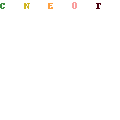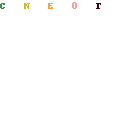Hello Friends, We are sharing some important Data Interpretation Questions Solutions Bank PO Clerk IBPS exams 2017 2018. These Data Interpretation Questions Solutions are very important for IBPS Clerk, SBI PO exam and IBPS PO & other upcoming exams like for SSC, CAT, XAT, NMAT, MAT & other exams 2017.
Data Interpretation Questions Solutions Bank PO Clerk provided by Bank4Study.com will help you a lot in your goal to crack the test. You will be taught to solve these questions better by solving many Data Interpretation problems.
You need to practice as many DI Questions as possible for Competitive Exams to know data interpretation techniques. Data Interpretation Questions Solutions Bank PO Clerk will help you master the concepts of data interpretation better. Once you are sure that you have mastered the concepts involved in data interpretation, then you can easily crack the Quantitative Section of Exams.
Data Interpretation Questions Solution Bank PO Clerk
Directions (Q. 1–5) : Study the following graph to answer the given questions—
The graph depicts the impact on production when three groups of employees were given three different types of incentive schemes during the period February to June.

1. The approximate impact (i.e., increase in production) of ‘No Supervision’ from Jan. to February was approximately what per cent to that of ‘Efficiency Increment’ on production ?
(A) 110
(B) 260
(C) 320
(D) 95
(E) None of these
1. (E) Increase from Jan, to Feb. in ’No Supervision’. = 30 – 15 = 15 thousand
Increase from Jan, to Feb. in ‘Efficiency Increment’ = 25 – 15 = 10 thousand
Reqd. percentage = 15/10 × 100% = 150% Ans.
(A) January & June
(B) February & April
(C) March & April
(D) February & March
(E) None of these
2. (B) Total production of all the three groups in Feb. = 15 + 25 + 30 = 70 thousand
total production of all the three groups in April = 15 + 20 + 35 = 70 thousand Ans.
(A) 16,000
(B) 10,000
(C) 20,000
(D) 31,000
(E) None of these
3. (E) Production in Feb. in ‘No supervision’ = 30 thousand
average production in ‘No supervision’ from Feb. to June = (30 + 35 + 35 + 30 + 25)/5 = 31 thousand
Reqd. increase = 31 – 30 = 1 thousand Ans.
(A) No supervision
(B) All the three
(C) Lunch Allowance & No supervision
(D) Lunch Allowance
(E) Efficiency Increment & No supervision
4. (B) In the month of June the decrease of each is 5000
(A) 1,20,000
(B) 1,00,000
(C) 1,05,000
(D) 1,50,000
(E) None of these
5. (C) Total production from Feb. to June in ‘Efficiency Increment’ = (25 + 25 + 20 + 20 + 15) thousand = 1,05,000
Directions (Q. 6–10) : Study the following table carefully and answer the questions based on it.

6. What was the total number of defective B type toys in 1995 and defective D types toys in 1993 ?
(A) 13290
(B) 14600
(C) 11120
(D) 14260
(E) None of these
6. (B) No. of defective B type of toys in 1995 + No. of defective D type toys in 1993. = (64000 × 14)/100 × (47000 × 12)/100 = 8960 + 5640 = 14600 Ans.
(A) B
(B) E
(C) A
(D) C
(E) None of these
7. (C) Average production of ‘A’ type of toys = (76 + 82 + 65 + 70 + 85 + 80)/6 × 1000 = (458 × 1000)/6
Average production of ‘B’ type of toys = (58 + 46 + 49 + 52 + 64 + 54)/6 × 1000 = (323 × 1000)/6
Average production of ‘C’ type of toys = (39 + 37 + 45 + 42 + 38 + 40)/6 × 1000 = (241 × 1000)/6
Average production of ‘D’ type of toys = (59 + 62 + 47 + 54 + 57 + 68)/6 × 1000 = (347 × 1000)/6
Average production of ‘E’ type of toys = (28 + 36 + 42 + 31 + 49 + 38)/6 × 1000 = (224 × 1000)/6
Hence it is clear from above that the average production of ‘A’ type of toys was maximum.
(A) 45680
(B) 42790
(C) 38700
(D) 44790
(E) None of these
8. (D) Total number of defect free toys in the year 1994.
= [(70 × (100 – 12))/100 + (52 × (100 – 12 ))/100 + (42(100 – 13))/100 + (54(100 – 4))/100 + (31(100 – 9))/100] × 1000
= [(70 × 88) + (52 × 88) + (42 × 87) + (54 × 96) + (31 × 91)] × 1000/100
= [6160 + 4576 + 3654 + 5184 + 2821] × 10
= 22395 × 10 = 223950 Average = 223950/5 = 44790
(A) 1992
(B) 1995
(C) 1993
(D) 1996
(E) None of these
9. (A) Average percentage of all five types of defective toys in 1991 = (5 + 11 + 5 + 9 + 8) × 1/5 = 38 × 1/5
Average percentage of all five types of defective toys in 1992 = (6 + 9 + 9 + 8 + 4) × 1/5 = 36 × 1/5
Average percentage of all five types of defective toys in 1993 = (8 + 8 + 6 + 12 + 15) × 1/5 = 49 × 1/5
Average percentage of all five types of defective toys in 1994 = (12 + 12 + 13 + 4 + 9 ) × 1/5 = 50 × 1/5
Average percentage of all five types of defective toys in 1995 = (9 + 14 + 11 + 7 + 11) × 1/5 = 52 × 1/5
Average percentage of all five types of defective toys in 1996 = (11 + 10 + 8 + 5 + 7) × 1/5 = 41 × 1/5
Hence, average percentage of all five types of defective toys in 1992 was minimum.
(A) 3220
(B) 7700
(C) 2730
(D) 3860
(E) None of these
10. (A) Reqd. difference = [46(100 – 9)/100 – 49(100 – 8)/100] × 1000 = [46 × 91 – 49 × 92] × 1000/100 = (4186 – 4508) × 10 = + 3220